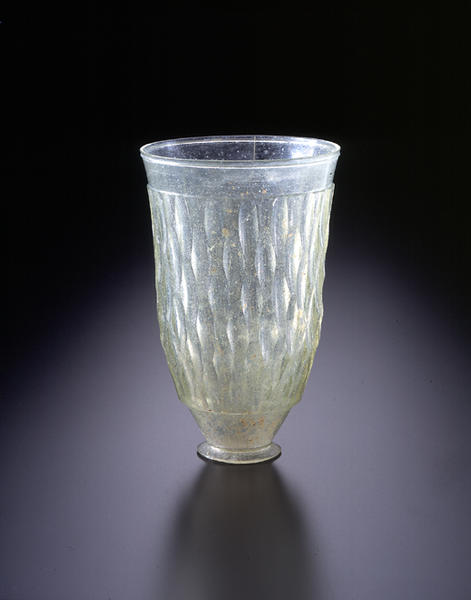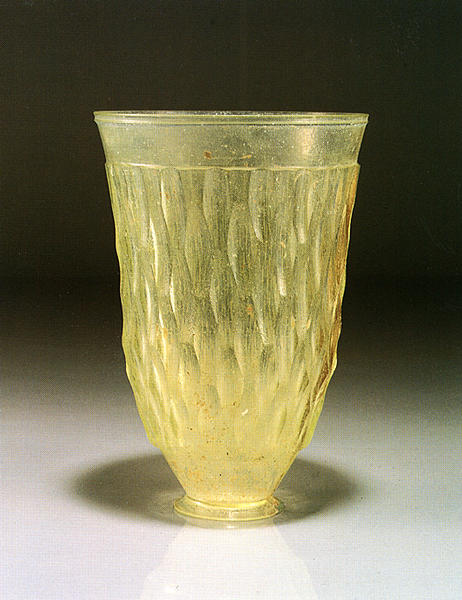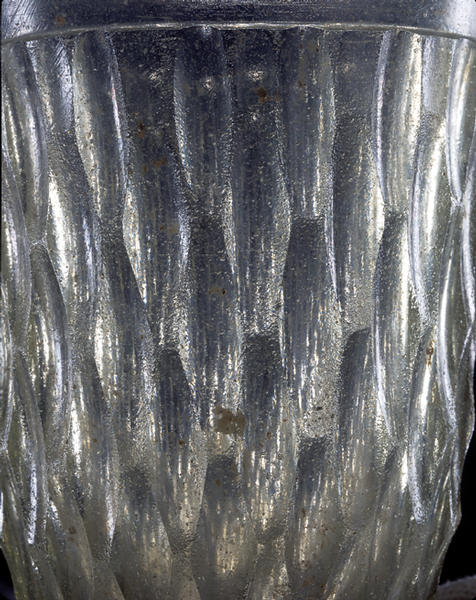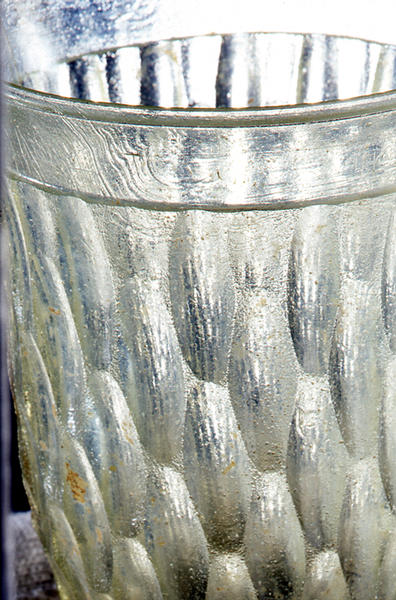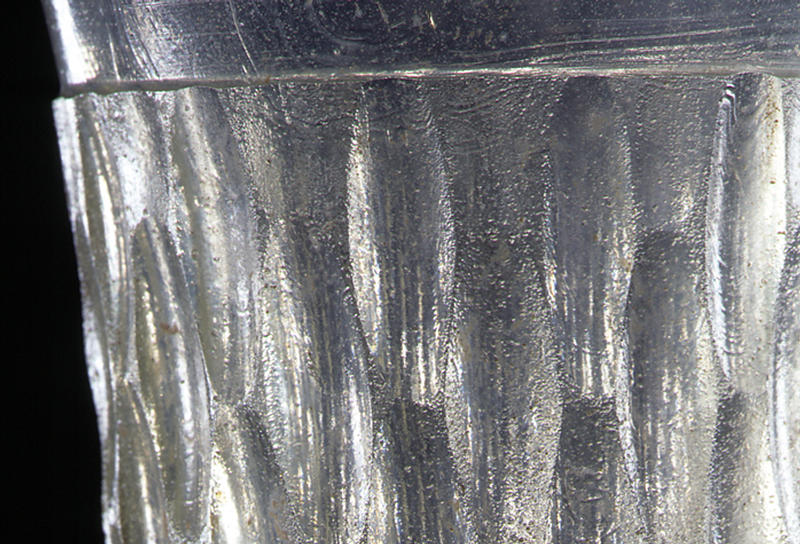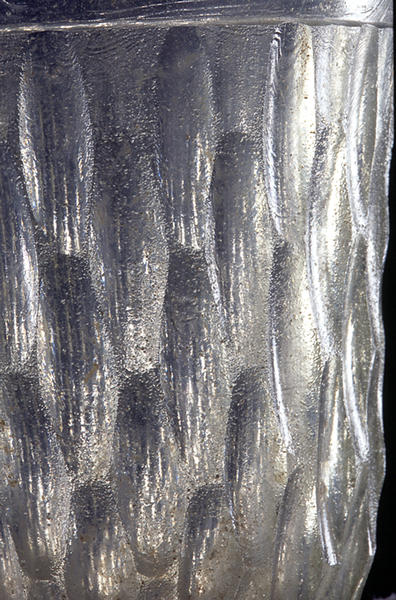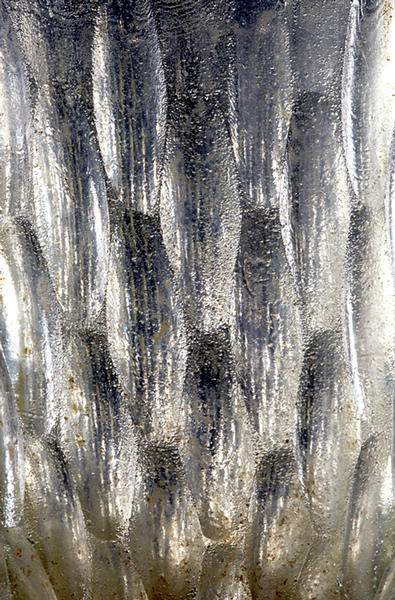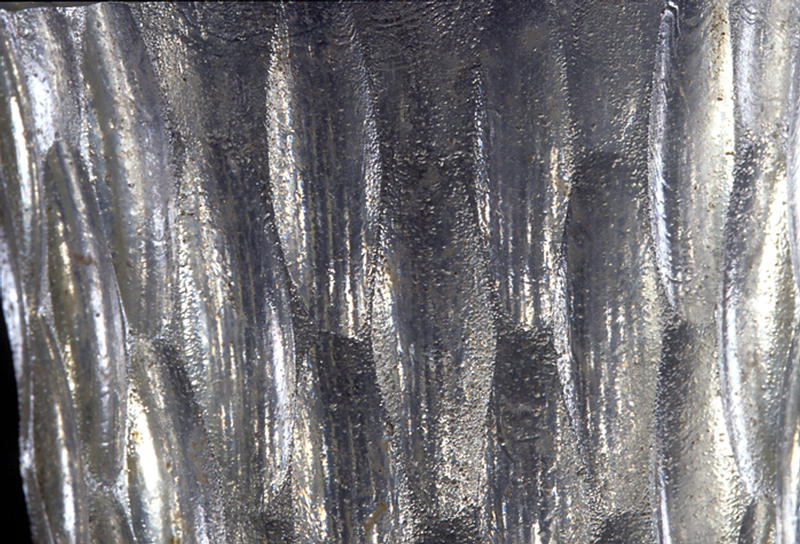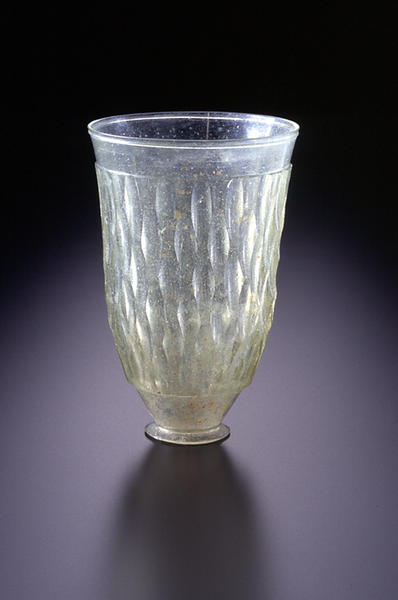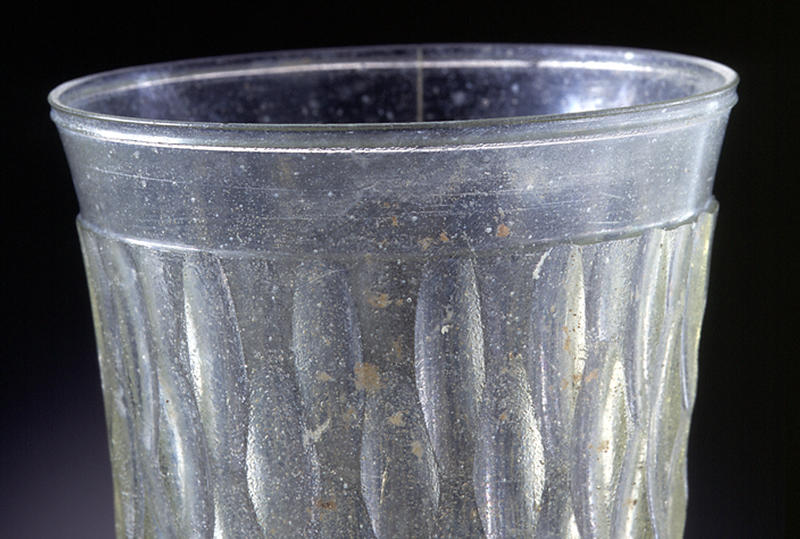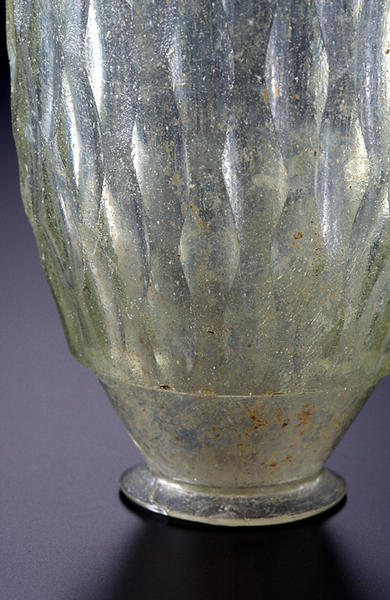Cut-glass Beaker
- Egypt
- 1st - 2nd century
- Glass
- H-13.1 D-9
Catalogue Entry
The cut-glass technique using almost colorless translucent cast glass has already appeared in Assyria by the 8th century BC, but it did not become widespread until the Roman period. This cup was blown from yellowish green translucent glass which was then formed in a mold and later cut with decorations. The long narrow hexagonal cuts are ranged in three and a half vertical registers, and with each neighboring row slipped off register by half a cut, for a total of 34 rows of cuts around the entire glass. The base of the mouth and the area around the foot are thinly formed and a single decorative band surrounds the base of the mouth area. The base has a small carved foot. The cut lines at the mouth area and the base of the foot are extremely sharp. Light shines through this work and the cuts on the opposite surface reflect small bits of light into each cut surface, creating an array of delicate light particles. There is a bit missing from the foot area, but otherwise this work is intact. This is a lovely example of a standard form.
